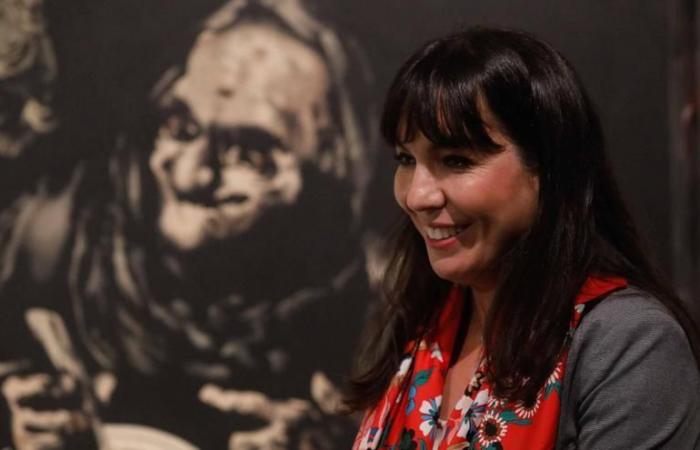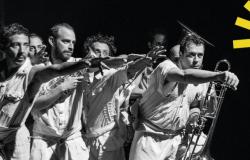In the Niemeyer dome is “The Food”, by the Chronicle Team. A lot of Goya passed for Spanish-style “pop-art.” That painting is next to which María Toral, who is the curator of the exhibition “Goya-Neither more nor less”, allows herself to be photographed. “I’ll stick with Equipo Crónica, I’ll stick with Gutiérrez Solana, who is one of my favorite artists,” highlighted the expert when asked by LA NEW SPAIN.
The Crónica Team was formed in the sixties by Manolo Valdés, Rafael Solbes and Juan Antonio Toledo. They foresaw, Toral explained, modernity and they did it, he highlighted, using tradition: Velázquez and Goya. Until the end of September, the Niemeyer exhibition hall will be open to the hundred-odd Goyas who walk along its curved walls and also to their successors. Toral travels with LA NEW SPAIN through his first five highlights and he does so by starting the journey with this old meal from the maestro of Fuendetodos that those from Crónica made shine by putting a siphon.
Fernando Botero.
The Niemeyer sample includes at least two boatmen. One is a full-color portrait of a bullfighter and the other is a drawing of a beggar to whom a disembodied glove hands some coins. “Botero said that in hard themes there is also an extraordinary aesthetic pleasure,” said the curator of this summer’s exhibition at the cultural center of the estuary. “This Botero beggar fits very well with the ‘Disaster of War’ that Goya wisely titled ‘If they are from another lineage,'” added the expert. “The Aragonese master shows that in wars social classes are separated even more,” she continued, observing the engraving in which impeccable gentlemen appear next to poor people who seem dead. Botero reinterprets the piece giving all the prominence to the homeless man and dehumanizing the rich man whose only luxury glove can be seen.
Gutierrez Solana.
“He is one of the great artists who claims the importance of Goya’s work within history and the importance of the artist’s role as a witness of his time, as a notary of what happens in his time,” explained the curator of the exhibition. of the summer at the Niemeyer that includes, among others, the sketch of “The Claudia Girls”, a joint portrait of prostitute women preparing “for their work.” “This issue was addressed by Goya at his time: women watched by any Claudia, who takes us to the matchmakers in Goya’s engravings where he denounces this situation of women.”
Robert Capa.
The exhibition also has photographs, specifically, of the most prominent photojournalist of the first half of the 20th century. “One of the characteristics of the ‘Disasters of War’ is that the protagonists are not the victors, but rather the vanquished. In this sense it is said that Goya was the first photojournalist in history. Photography did not exist, But there is graphic testimony that Robert Capa left in his series of engravings. We know that he was in the Civil War, on the Ebro front, as happened to Goya, who was in the siege of Zaragoza and photographed a murdered dead man. hanging from a tree, naked, an image that joins Goya’s engravings 37 and 39: ‘Great feat with dead people’ and ‘This is worse’.
Paula Rego.
“One of the characteristics of Goya, the author ahead of his time, is the love he feels for animals. We could talk about bullfighting, but this is not the time, that series failed due to its brutality: dead bulls, dead dogs, bullfighters dead… but here we have one of the proverbs, the one titled ‘Loyalty’. We see a man subjected to the insults of those around him: today we would say that he is being a victim of ‘bullying’. “You don’t understand what is happening: in this we have the deformed man defending a small dog. This reflects very well Goya’s character towards animals: his involvement. This is also reflected by Paula Rego, a wonderful Portuguese artist”, Toral concluded.






